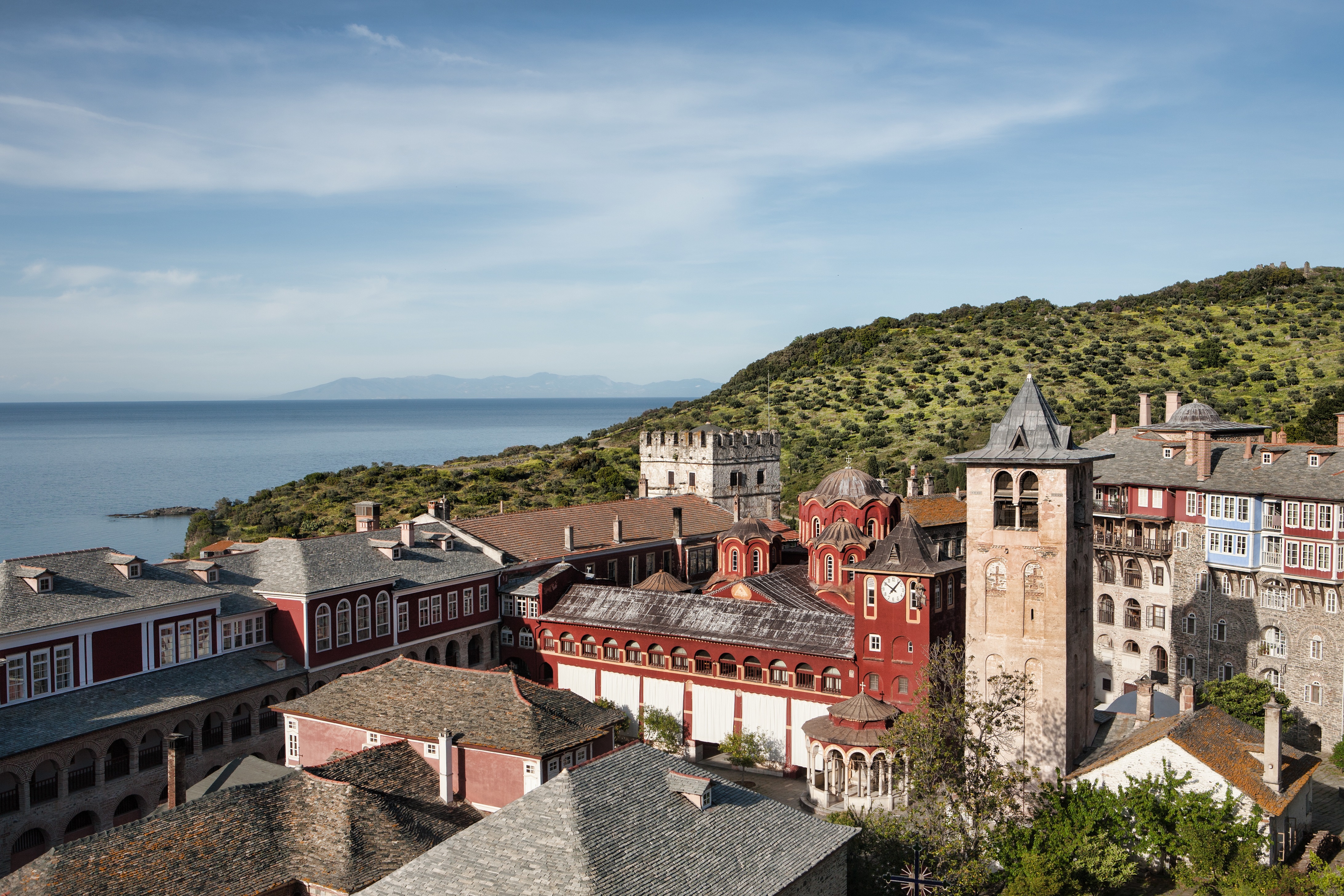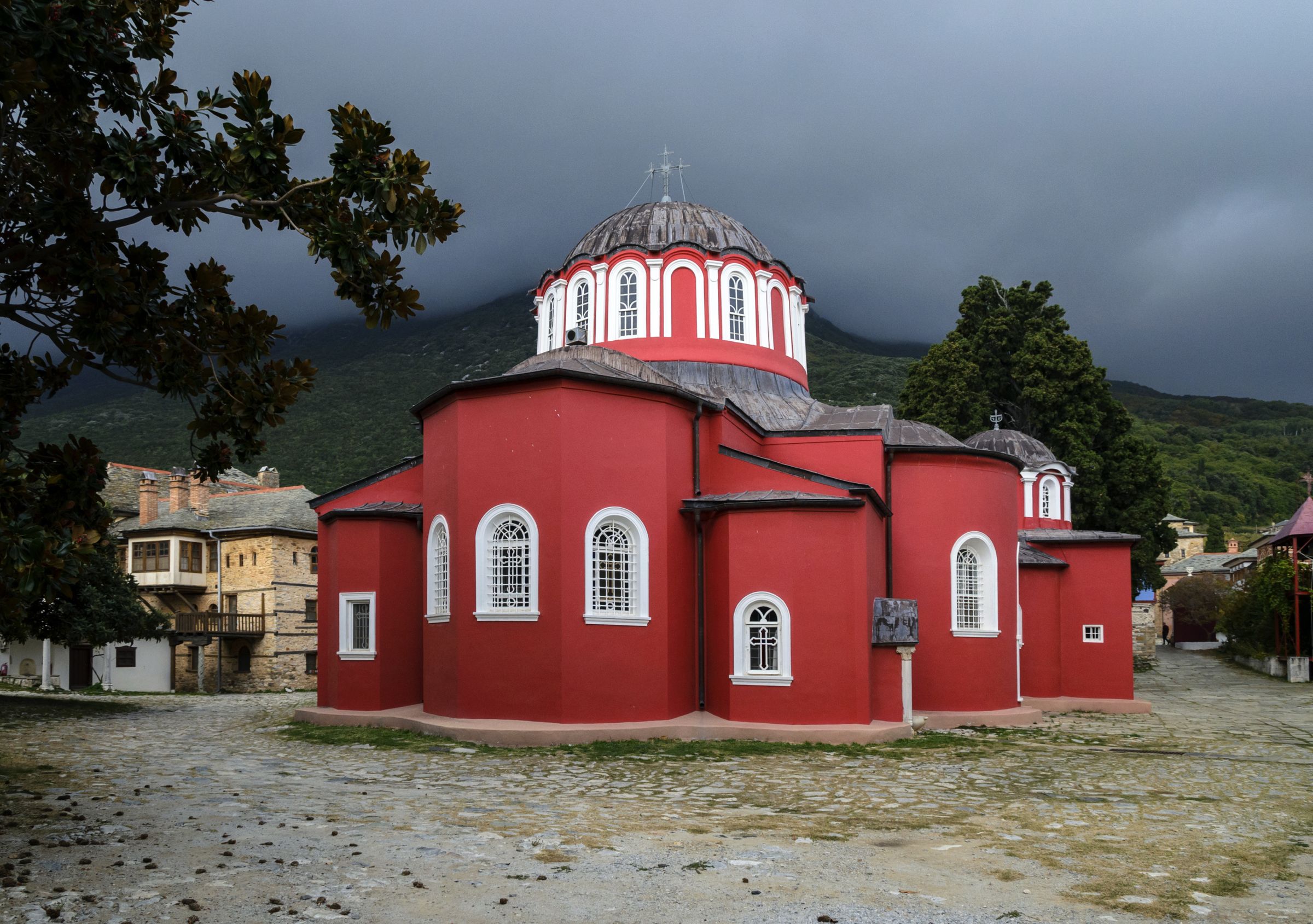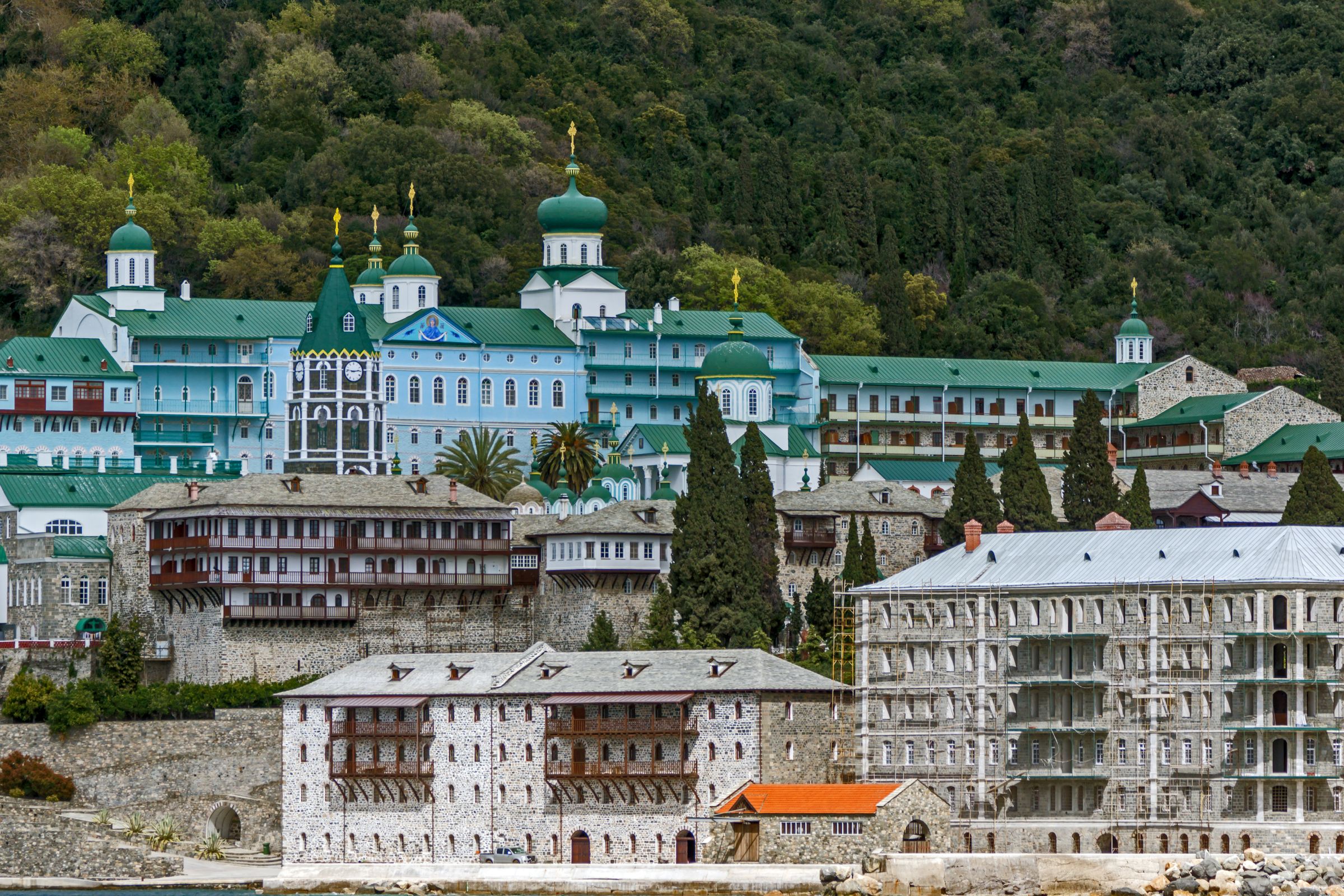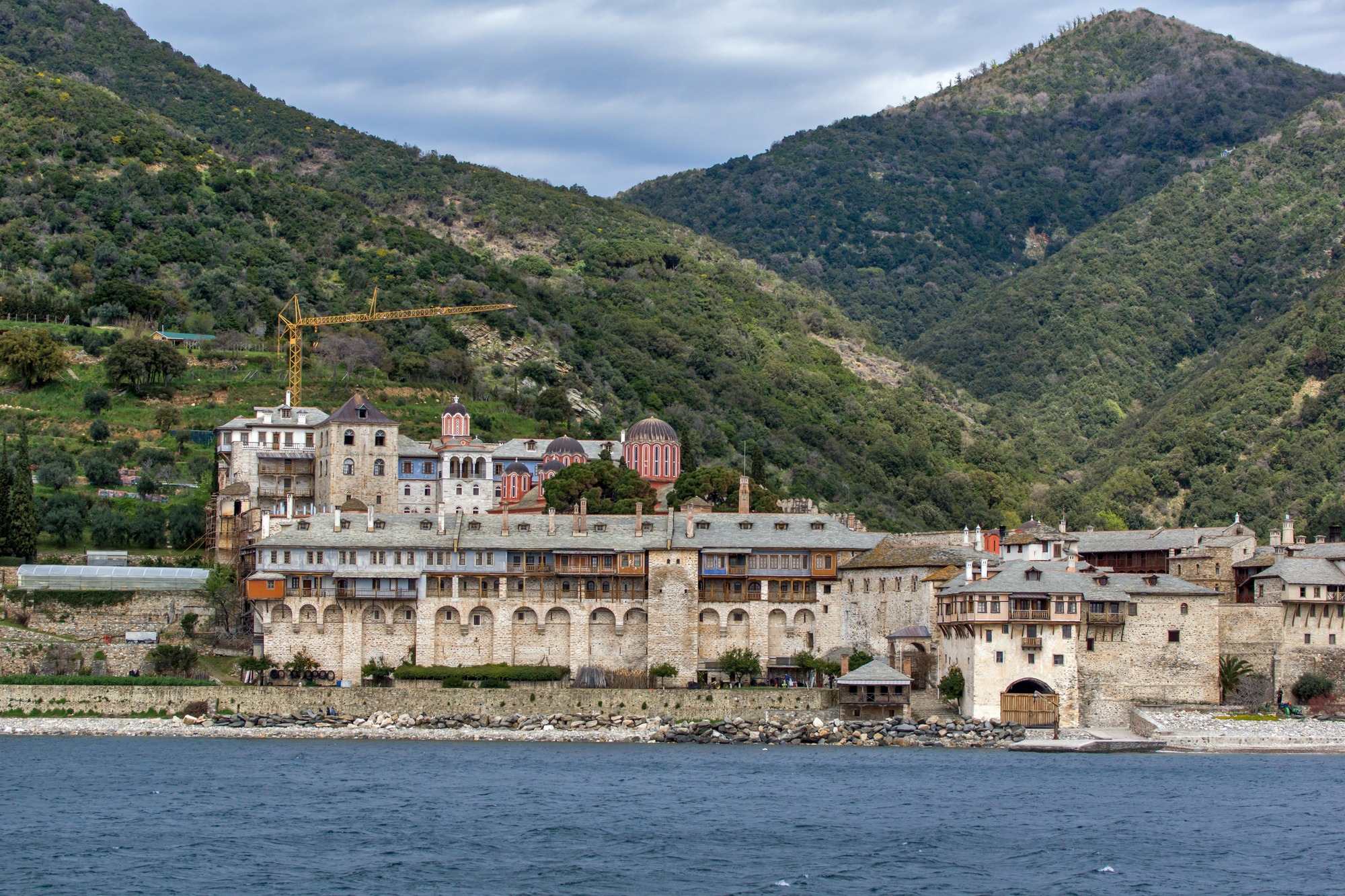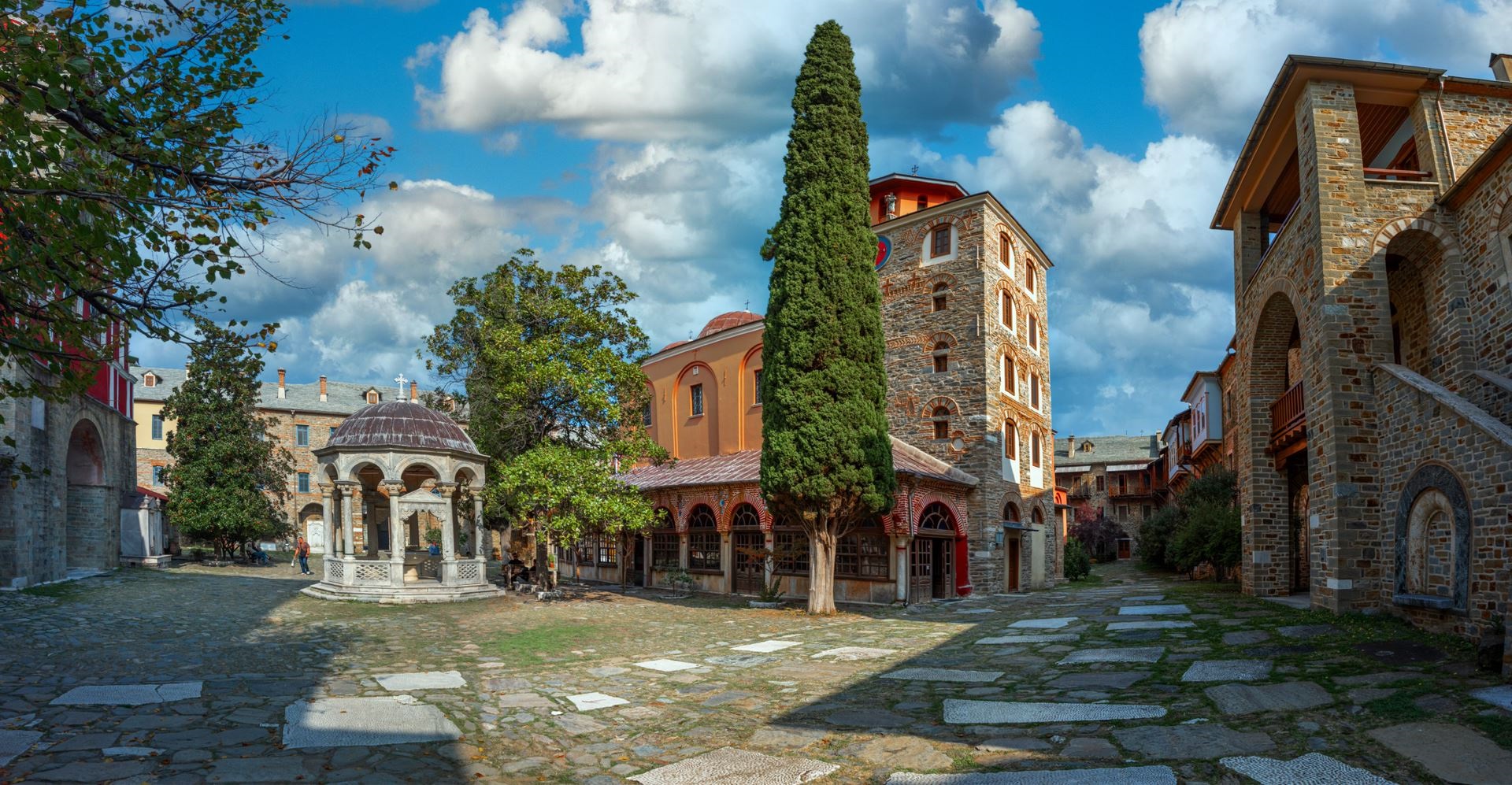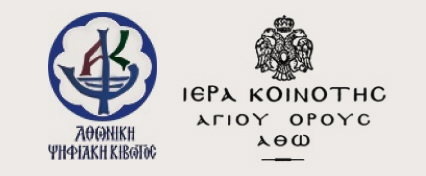
Vatopedi Monastery
Vatopedi Monastery
The remarkable monastic complex known for its unique mosaic artwork.
The remarkable monastic complex was founded in the 10th century by three disciples of Agios Athanasios: Athanasios, Nicholas, and Antonios from Adrianople. It is one of the oldest monasteries on Mount Athos and architecturally one of the most interesting, with its defensive walls, enormous paved courtyard, and independent buildings organized in a triangular layout.
Located on the northeastern coast of the Athos peninsula, the monastery is built in a beautiful bay. Its name, Vatopedi, comes from the presence of wild blackberries (called "vata" in Greek) in the area, and both spellings ("Vatopedi" and "Vatopediou") are accepted. The monastery complex includes a total of thirty-three chapels, twenty-one of which are within the architectural compound.
The main church preserves the unique mosaic art in Mount Athos, dating back to the Byzantine Era (10th-14th centuries), as well as painted frescoes by Manuel Panselinos (1312), a representative of the Macedonian School.
Of exceptional artistic value is the gilded wooden iconostasis in the chapel of Agia Zoni (Holy Girdle). The Holy Girdle is kept in three pieces within the monastery, following a donation by Emperor John Kantakouzenos in the 14th century, and it is the most significant relic in Vatopedi. The collection of icons depicting the Virgin Mary is also extensive, with eight of them holding special spiritual value (Bimatarissa, Antiphonitria, Paramythia, Pantanassa, Elaiobry̱tissa, Pyrovolithissa, Theodorskagia, Esphagmeni̱).
The monastery's library houses over 300,000 documents, including more than 2,000 manuscripts, several of which are written on parchment, along with numerous original and rare copies. Additionally, Vatopedi Monastery preserves the largest number of Holy Relics on Mount Athos, portable icons, sacred vessels, and religious artifacts.



